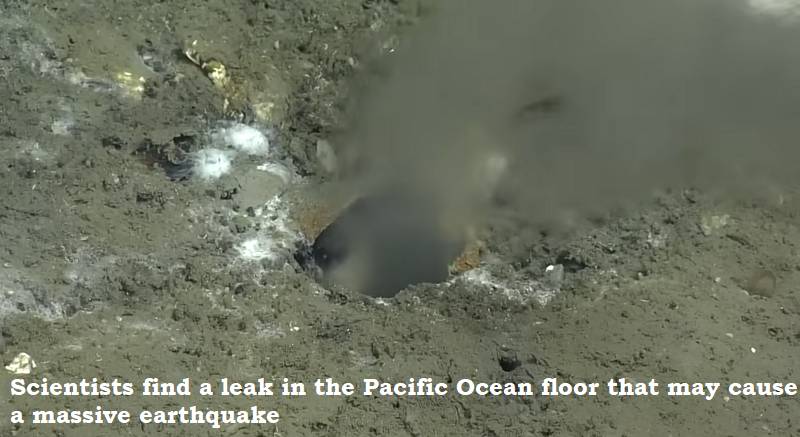
A new discovery by scientists indicates the presence of an unusual leak on the floor of the Pacific Ocean that could trigger a massive earthquake. The leak, known as Pythia’s Oasis, was identified off the coasts of the USA and Canada and has never been seen before.
It is present in the Cascadia Subduction Zone (CSZ), a huge fault line extending from Vancouver Island on Canada’s west coast to Northern California, where two plates collide. The water spewing from the fault at temperatures between 300 and 500 degrees Fahrenheit, has the potential to increase pressure and stress the plates.
Evan Solomon, a co-author of an article in Scientific Advances on this phenomena, stated that if the fluid pressure is high, the plates can slip, but if the fluid pressure is lower, the two plates will lock, leading to stress building up and creating a damaging quake.
The leak was discovered by scientists who observed methane bubbles rising from a mile beneath the ocean. Solomon described the water spewing out of the seafloor as “like a firehose,” and warned that it could increase the pressure at the fault and stress the plates, leading to an earthquake if the tension increases and the plates start to move.
The authors of the research indicate that Pythia’s Oasis may not be the only seep of its kind, and there could be others close to the CSZ. Co-author and professor of oceanography, Deborah Kelley, stated that Pythias Oasis provides a rare window into processes acting deep in the seafloor, and its chemistry suggests that the fluid comes from near the plate boundary.
This suggests that the nearby faults regulate fluid pressure and megathrust slip behavior along the central Cascadia Subduction Zone.
The discovery of Pythia’s Oasis has raised concerns about a possible massive earthquake off the coast of North America. If additional water keeps coming out, it could further increase pressure at the fault, which may stress the two plates and cause them to move, leading to a catastrophic earthquake.
The research also suggests that the fluid released from the fault zone is like leaking lubricant, and less lubricant means stress can build up to create a damaging quake. Reports indicate that the seep could be an indication of a massive earthquake off the coast of North America, and seismologists find the discovery intriguing, suggesting that there may be other similar leaks close to the CSZ.

Post Your Comments